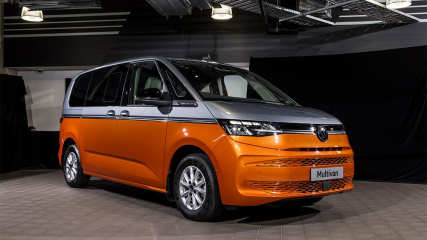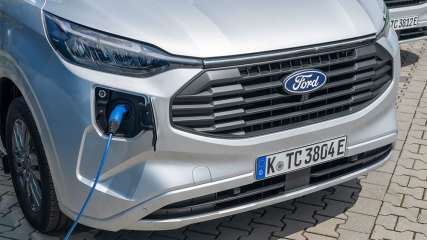2025 LDV G10+ facelift gets significant upgrades, but does it do enough to undercut the Toyota HiAce and Ford Transit while remaining one of Australia's most popular vans?
By Laura Berry · 02 Apr 2025
One of the oldest vans on the market is showing no sign of retiring anytime soon with the LDV G10+ appearing to have been given a substantial facelift, which includes new safety tech, a large media screen, new styling and features.The new version wears a $1500 price rise, which still undercuts rivals such as the Toyota HiAce and Ford Transit by a sizable margin.Importantly, it's clear the new G10+ has been fitted with autonomous emergency braking (AEB), which was a large oversight in its spec previously. This change would ensure the G10+ would meet the new 2026 minimum safety standards requiring AEB come as standard on all new vehicles.Lane keeping assistance and forward collision warning will also join rear parking sensors, a reversing camera driver and passenger airbags, plus electronics stability control as part of the van's new safety suite.Other new G10+ features CarsGuide spotted include a 12.3-inch media screen, replacing the previous 7.0-inch display. Apple CarPlay and Android Auto is also standard, so is digital radio, air conditioning and power windows. It was also noted that the brands website now only lists diesel variants, which could indicate the petrol engine has been dropped, at least initially. The latest price data shows the new G10+ has also increased in price. The entry six-speed manual 2.0-litre turbo-diesel is now $38,937, drive-away, which is a $1579 increase on the previous model. Meanwhile, the G10+ with the eight-speed automatic is now $39,463 (also up by $1579). For context, Toyota’s HiAce (the most popular vehicle in the segment) starts at a list price of $48,886, while the Ford Transit begins at $56,590.Images also reveal a slight redesign to the front of the vehicle with a new look honeycomb grille and restyled front bumper, as well as a tweaked dash layout. Measuring 5167mm end-to-end, 1980mm wide, 1938mm tall and with a one-tonne payload capacity the G10+ is considered a medium-sized van. It has been on sale in Australia for a decade this year, yet it still remains one of the most-bought medium sized vans on the market with 2843 sales in 2024.It appears LDV still sees a place for the G10+ to live alongside the new and more expensive Deliver 7, which was once touted to replace its aging sibling. The Deliver7 arrived towards the end of 2024 with a price of $44,726 driveaway, although it was headlined primarily by its electric eDeliver 7 spin-off, which wears a competitive price-tag of $67,358 (drive-away).
.jpg)
.jpg)
.jpg)
.jpg)
.jpg)
.jpg)



.jpg)
.jpg)